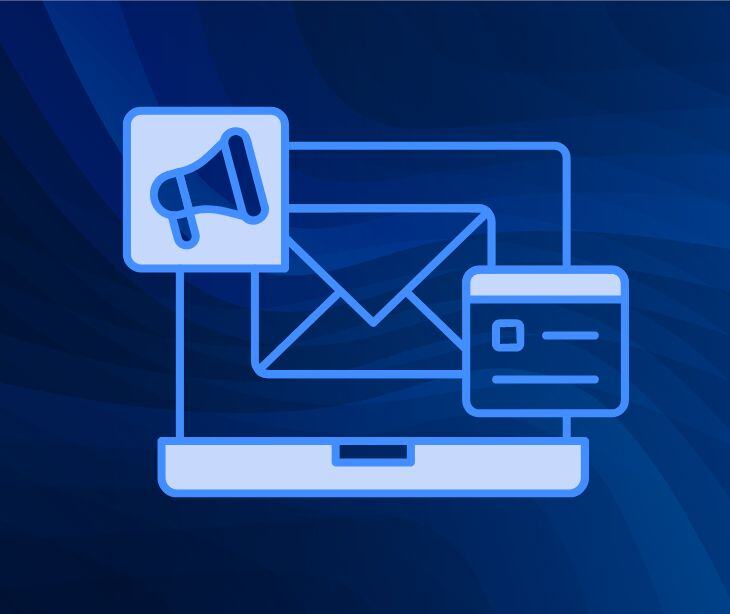3 min read
Improving employee well-being with HIPAA compliant emails
Caitlin Anthoney April 04, 2024

Employers can send staff HIPAA complaint emails to offer wellness support, which could lead to better health and better working efficiency.
The impact of email
The Gitnux market data report 2024 shows that “47% of employees admit that email is still their most-used tool at work.” Despite the rise of various messaging platforms, email remains a central means of communication for nearly half of all employees.
Additionally, it shows that “email marketing is 40% more effective than Facebook and Twitter.” This suggests that email continues to be a highly effective tool for businesses looking to reach their target audience. As social media platforms evolve, email marketing remains a reliable and impactful strategy for engaging with customers or, in this case, employees.
A study on improving employee well-being showed that “occupational digital mental health interventions can improve workers’ psychological well-being and increase work effectiveness...”
So, businesses can use email interventions to support their employees' mental health and overall productivity in the workplace. They can also provide resources and training on these interventions to further enhance their impact on employee well-being. By incorporating these interventions into their workplace culture, businesses can create a more supportive and positive environment for their employees.
Professionalism and personal well-being
The study mentioned above also noted that “employees are so invested in appearing competent and strong that they are not willing or able to engage with [email interventions].”
Organizations can use HIPAA compliant emails to overcome employees' reluctance to participate in email interventions. Secure platforms, like Paubox, encrypt emails to protect sensitive information and safeguard employee privacy.
Organizational leaders can also encourage a culture where asking for help via secure email channels is seen as a sign of strength and normalizing vulnerability. This could help employees feel comfortable using email interventions for their well-being without jeopardizing their confidentiality.
Furthermore, employees should be trained on the security protocols included in these email platforms. This way, they are aware of the proper procedures for communicating securely. Email interventions can facilitate open dialogue for employees seeking support, sharing concerns, or expressing appreciation. Regularly scheduled check-in emails or wellness surveys can help employees voice their needs and contribute to a more supportive work environment.
Email strategies for overcoming barriers to well-being in the workplace
1. Provide education and awareness: Provide general information and guidance on accessing support services or participating in well-being activities. This can include resources for mental health counseling, support groups, employee assistance programs (EAPs), exercise classes, or mindfulness workshops.
2. Normalize help-seeking behavior: Create emails that normalize help-seeking behavior and encourage employees to prioritize their well-being. For example, one email could include resources for support and remind employees of the importance of taking breaks throughout the workday. Another email could highlight success stories from colleagues who have used the available resources and seen positive results in their overall well-being.
3. Lead by example: Organizational leaders can support well-being initiatives and HIPAA compliance by openly discussing the importance of both topics. They can model healthy work-life integration practices, including using HIPAA compliant emails for confidential communications.
4. Implement business associate agreements (BAAs): Employers must enter into BAAs with email service providers and third-party vendors to ensure compliance with HIPAA regulations. Obtain assurances from business associates that they will adhere to HIPAA requirements and implement appropriate safeguards to protect PHI.
5. Use Transport Layer Security (TLS): Implement TLS encryption protocols for secure transmission of PHI and other sensitive information. Ensure email systems support TLS encryption to protect data in transit and at rest, maintaining HIPAA standards.
6. Regularly evaluate and adjust strategies: Employers must regularly assess the impact of the email interventions. They can get feedback from employees to identify areas for improvement and ensure that security measures meet their needs.
Go deeper: What is a business associate agreement?
FAQs
Are all employee emails considered PHI?
Not all employee emails are automatically considered Protected Health Information (PHI) under HIPAA regulations. However, emails containing identifiable health information like an individual's medical treatment, diagnosis, or payment for healthcare services would be classified as PHI.
Can employers send emails containing PHI without violating HIPAA regulations?
Yes, employers can send emails containing PHI if they ensure they are encrypted, accessed only by authorized personnel, and comply with HIPAA regulations.
What steps should employers take to ensure their email interventions for workplace well-being are effective?
Employers should assess employee needs, tailor interventions accordingly, provide clear communication, offer accessible resources, and evaluate the impact of interventions regularly to ensure their effectiveness.
Subscribe to Paubox Weekly
Every Friday we'll bring you the most important news from Paubox. Our aim is to make you smarter, faster.




